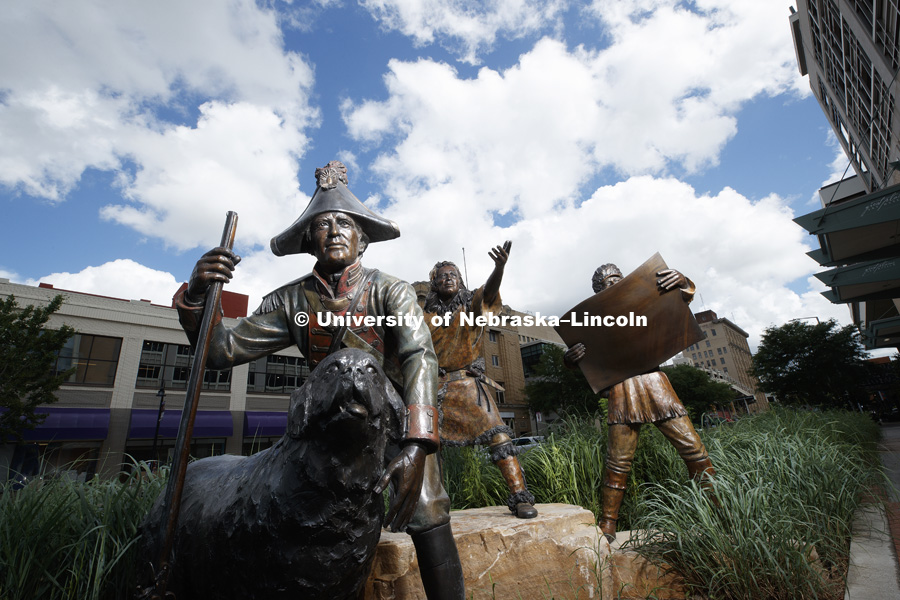
Title:
180620 Great Plains 012v2 (permalink)
Order Instructions:
To order this photo, send Craig Chandler an email and include the text '180620 Great Plains 012v2'.
Caption:
On the Trail of Discovery, a bronze by George Lundeen. Surrounded by native grasses, this multi-figure bronze sculpture commemorates the journey of Lewis and Clark from 1804 to 1806. The co-captains point the way into the Great Plains Art Museum, encouraging passersby to step into the building and discover the history and art of Nebraska and the Great Plains. As they entered the Great Plains environment in 1804, Meriwether Lewis and William Clark discovered a cornucopia of wildlife, endless grassland, and a semiarid climate. The captains met and interviewed the indigenous peoples and resident traders, wrote scientific descriptions of wildlife, collected cultural objects, and participated in Indian activities. Lewis and Clark rose above the prejudices of their time and left a cherished ethnographic legacy. Created by the nationally-renowned sculptor George Lundeen, On The Trail of Discovery portrays Meriwether Lewis and William Clark with two stylized Native American figures. Lewis is shown in military uniform like the one he wore on the expedition, while Clark, the mapmaker of the expedition, is shown wearing frontier clothing.
Seaman the Newfoundland dog stands faithfully beside his master, Lewis. The Native Americans are shown with few decorations or designs to their clothing, as Lundeen did not wish to have them identified with any particular American Indian tribe. Their guide is adorned with a “peace medal” that Lewis and Clark gave to Native American chiefs they met along the journey. If studied closely, the medal shows the likeness of President Thomas Jefferson. The figure also wears coins representing the 2000 Sacagawea dollar that provide a reminder that Sacagawea assisted and traveled with the expedition from Montana to the Pacific Ocean and back. The Native American child hoists an American flag similar to the ones carried by the expedition.
On The Trail of Discovery was installed on the corner of 12th and Q streets as part of the 200th anniversary o
Seaman the Newfoundland dog stands faithfully beside his master, Lewis. The Native Americans are shown with few decorations or designs to their clothing, as Lundeen did not wish to have them identified with any particular American Indian tribe. Their guide is adorned with a “peace medal” that Lewis and Clark gave to Native American chiefs they met along the journey. If studied closely, the medal shows the likeness of President Thomas Jefferson. The figure also wears coins representing the 2000 Sacagawea dollar that provide a reminder that Sacagawea assisted and traveled with the expedition from Montana to the Pacific Ocean and back. The Native American child hoists an American flag similar to the ones carried by the expedition.
On The Trail of Discovery was installed on the corner of 12th and Q streets as part of the 200th anniversary o
Copyright:
© 2018, The Board of Regents of the University of Nebraska. All rights reserved.